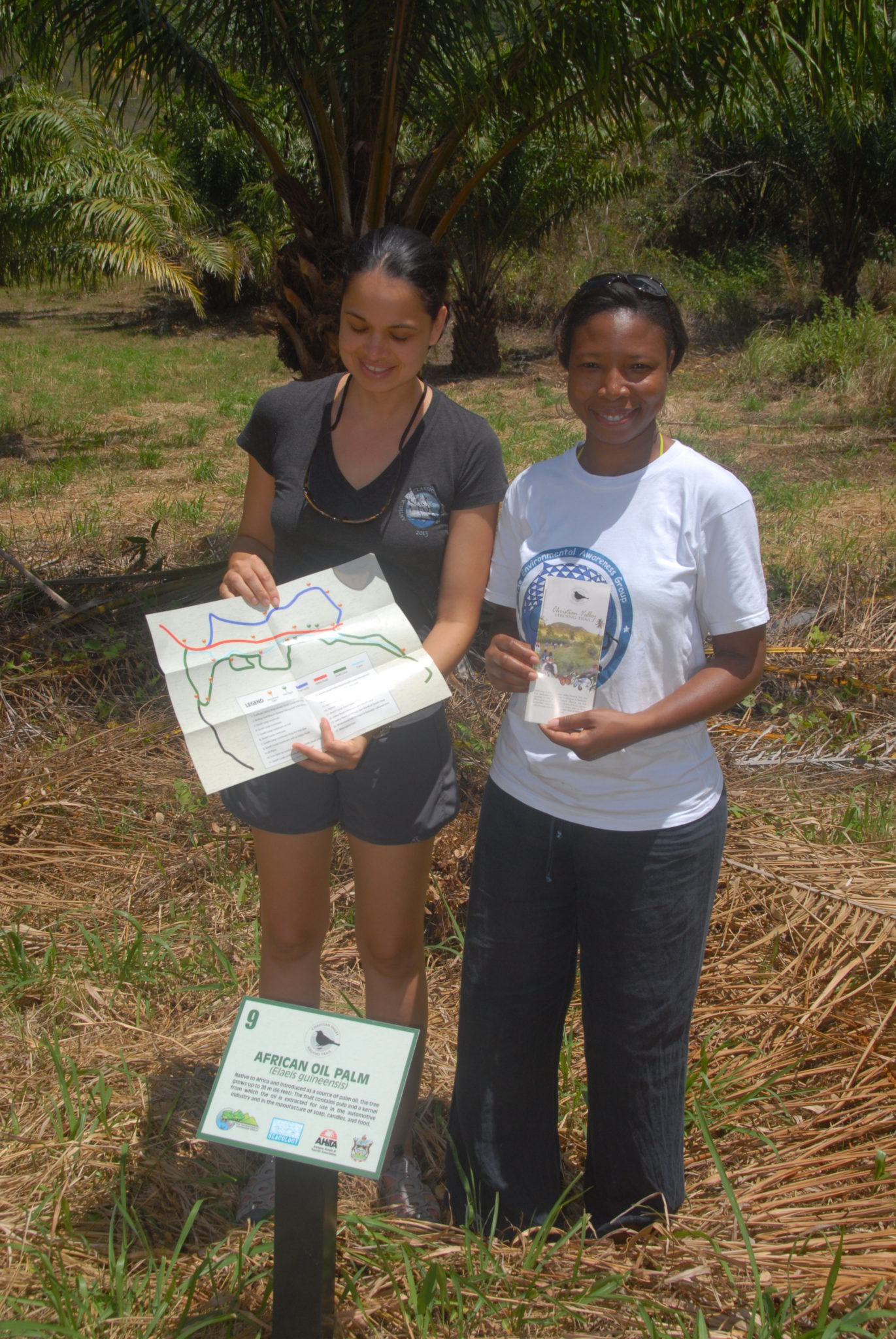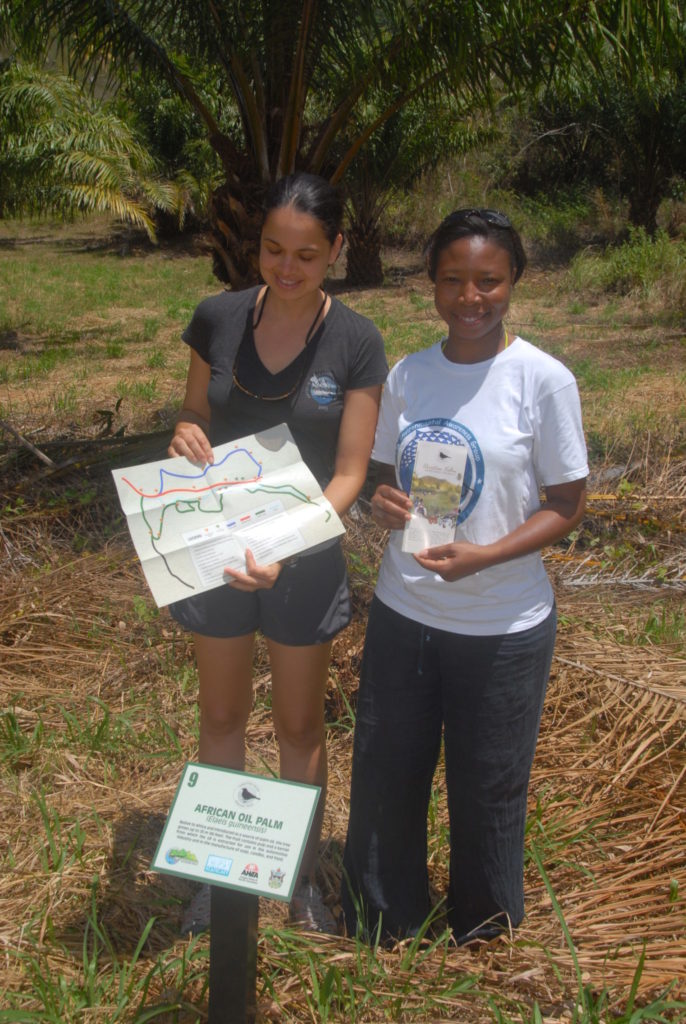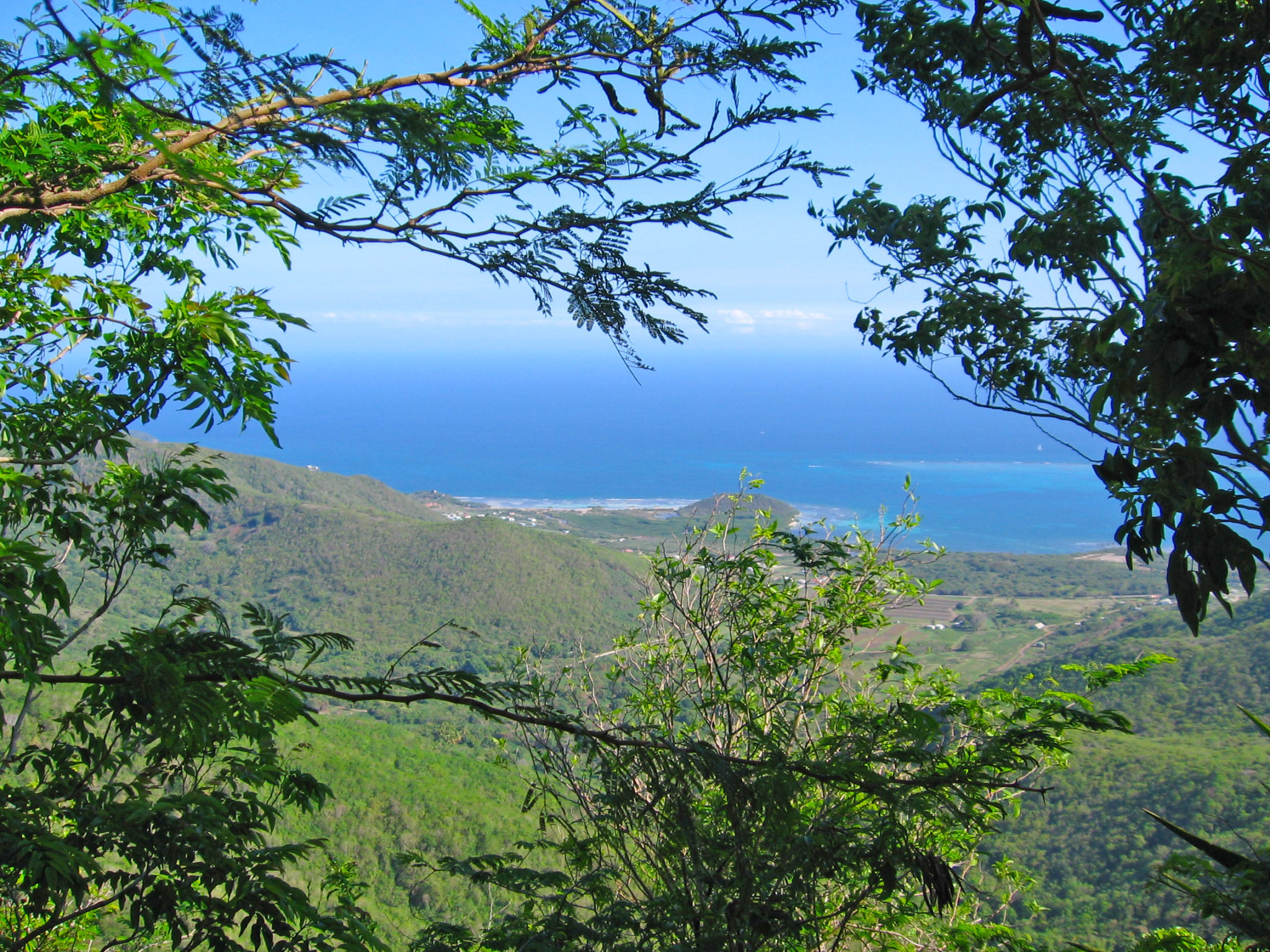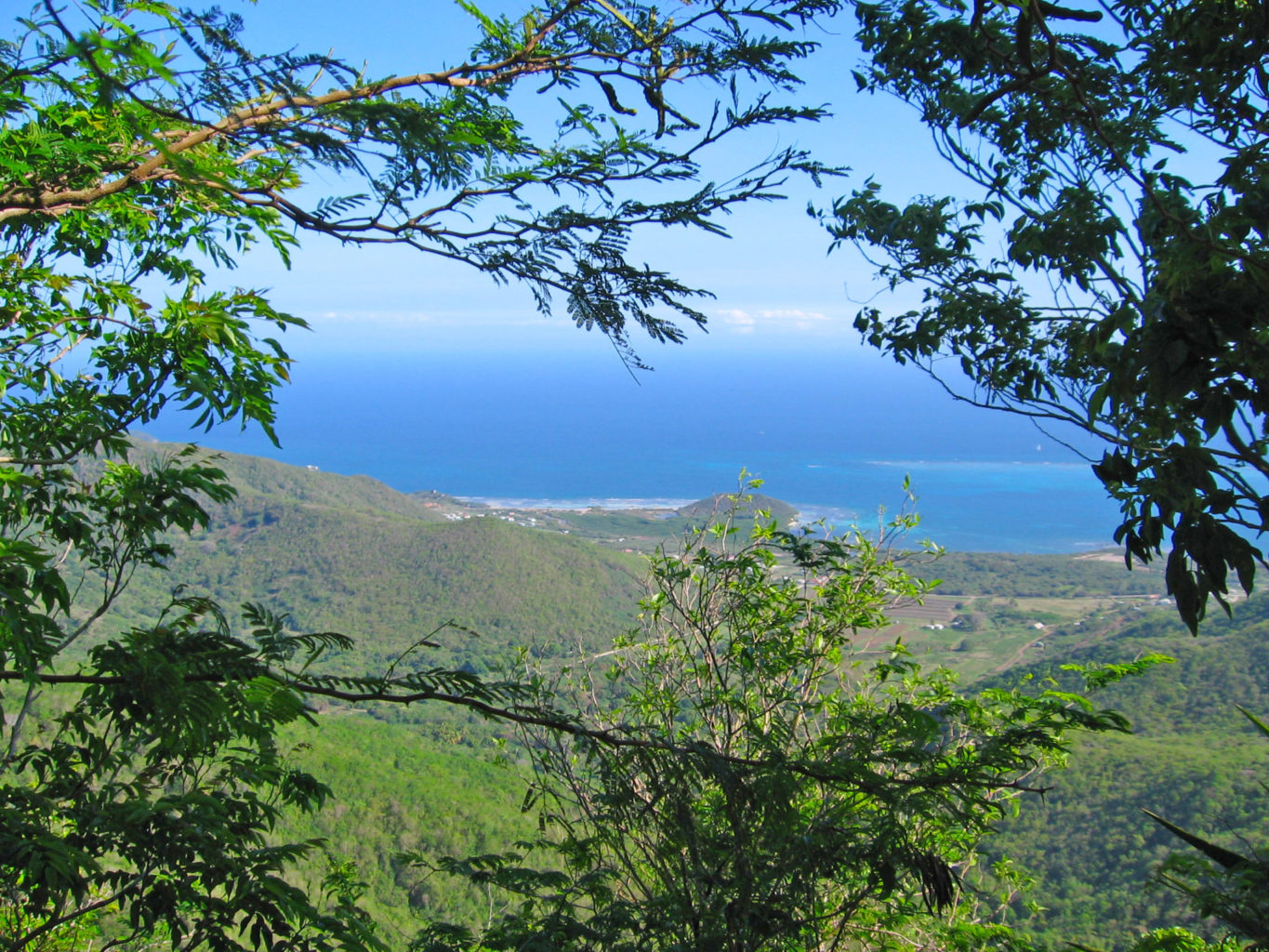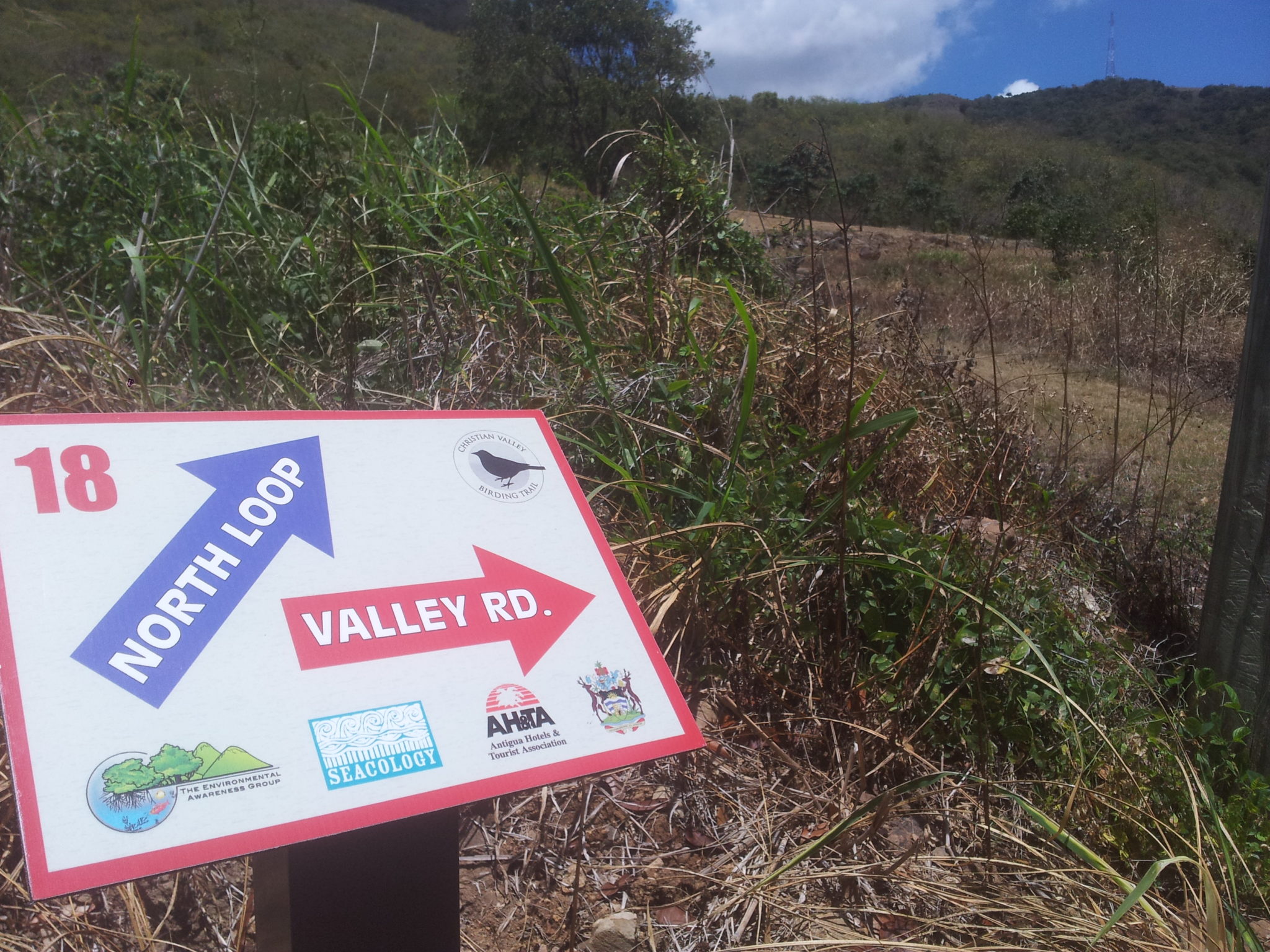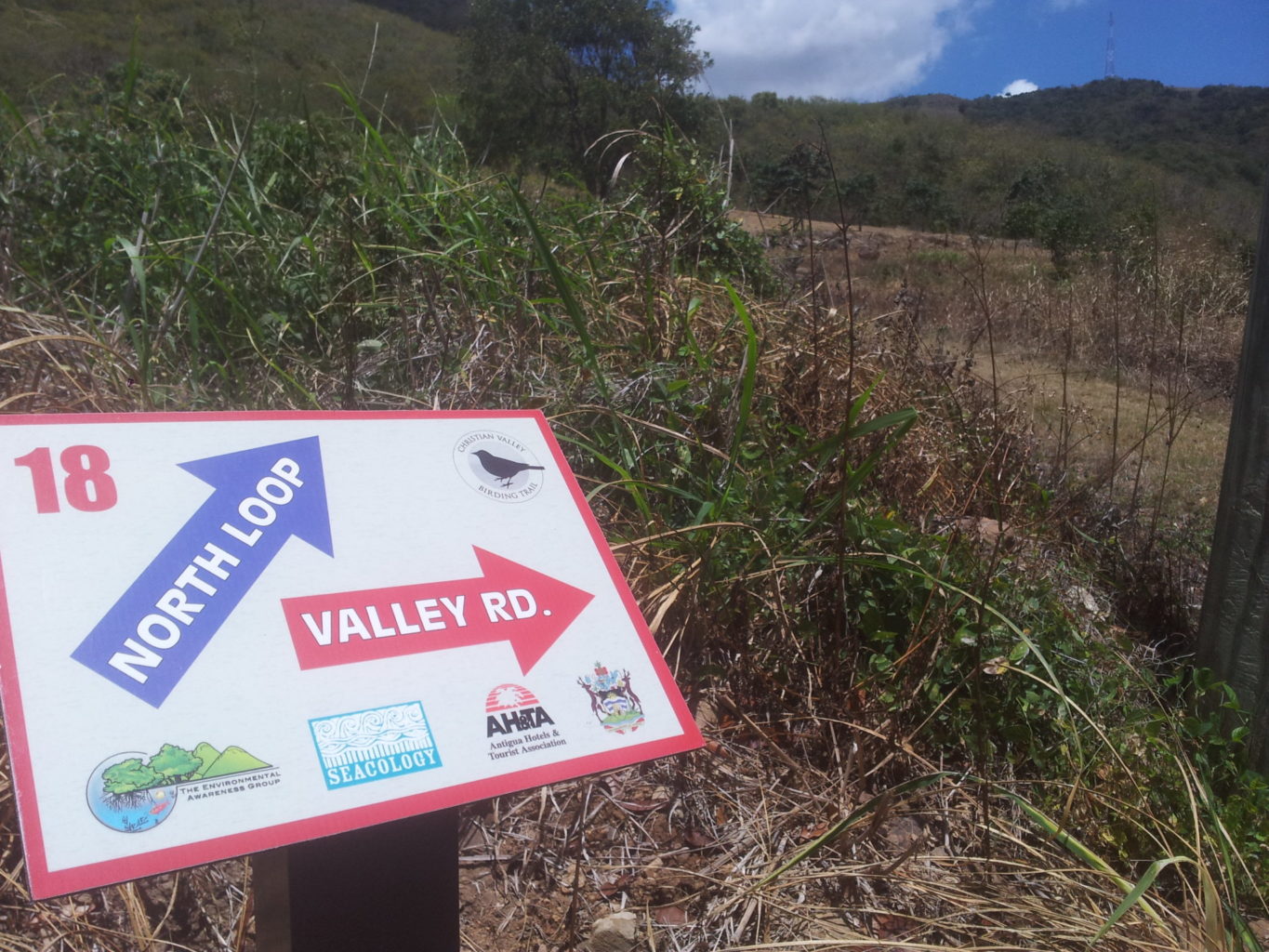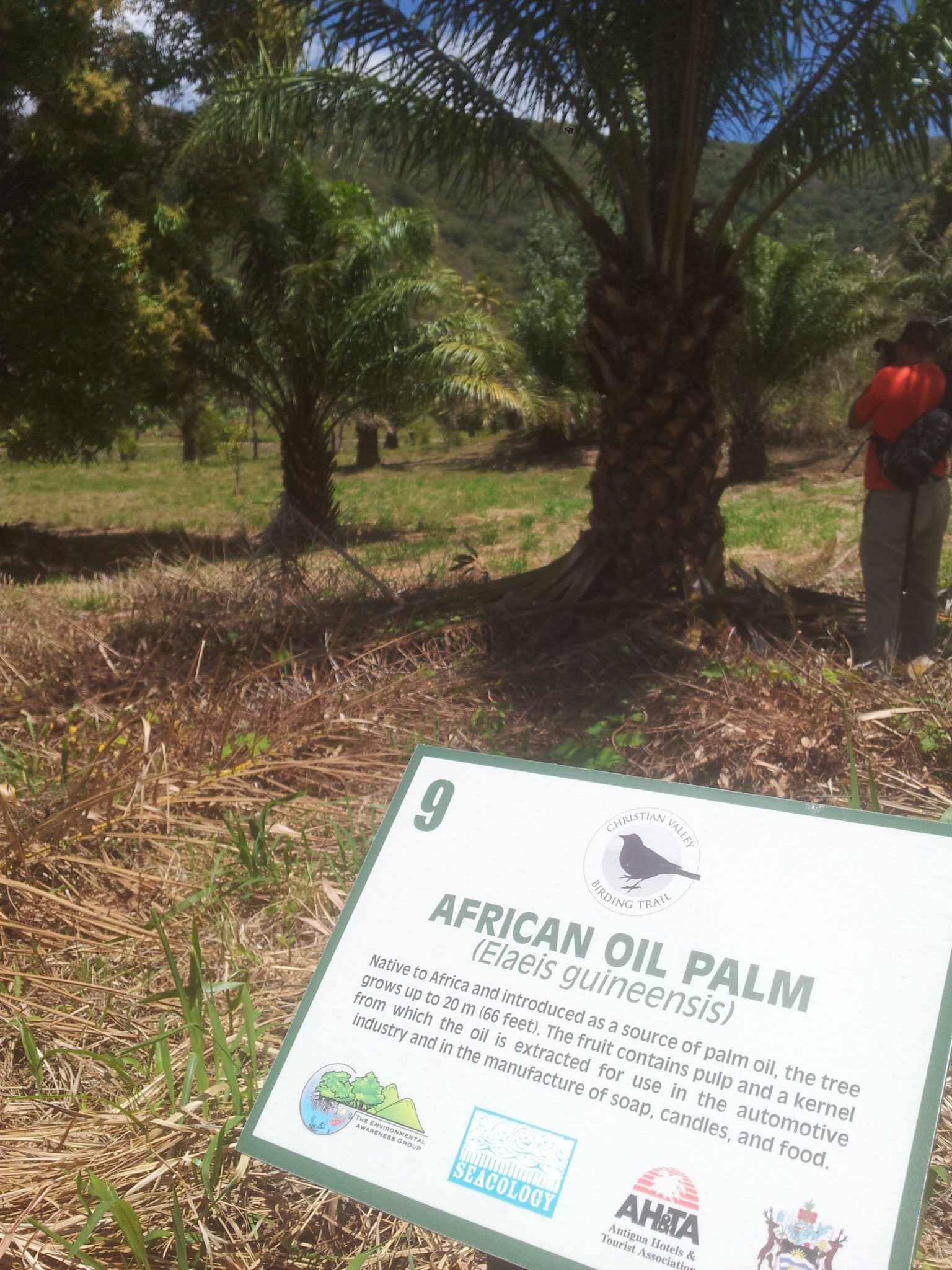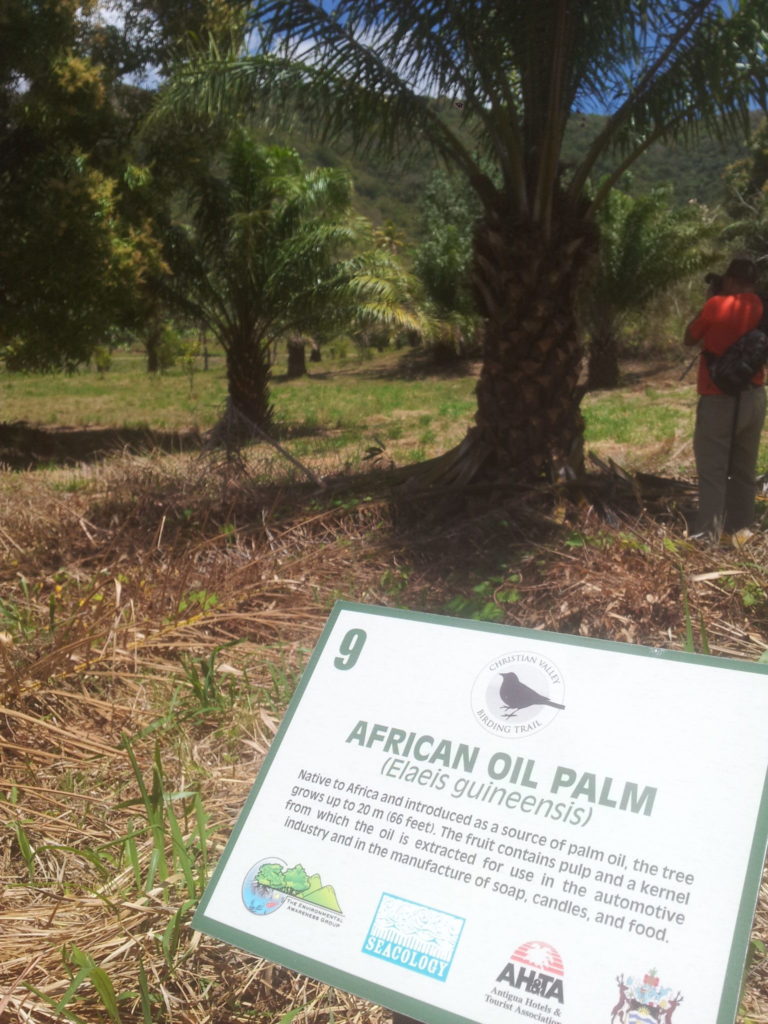Mount Obama, formerly known as Boggy Peak, is the highest point (395 meters, or 1,296 feet) on the island of Antigua. With sweeping views of the entire island and surrounding sea, Mount Obama has become a popular hiking spot. It is also an important area for soil and water conservation, and for the protection of native plant and bird species. Mount Obama National Park (MONP), which supports nine out of 11 Lesser Antilles restricted-range bird species, is designated as an Important Bird Area ecosystem.
The area is also of historical and cultural importance. During the 17th and 18th centuries, the hills served as a refuge for escaped African slaves (“maroons”). A few of their trails, although mainly overgrown, still exist. Since 2010, local NGO Environmental Awareness Group (EAG) has partnered with the MONP to develop and maintain nature trails in Christian Valley, in the mountainous region of MONP. One of EAG’s goals is to bolster local support for conservation of the forest ecosystem in the MONP. It also hopes that the area will demonstrate that conservation, by promoting ecotourism, is economically important.
Seacology will fund descriptive and directional signage for the trails. EAG will also use the Seacology grant to produce an informational brochure on the trail system and mountain’s biodiversity.


